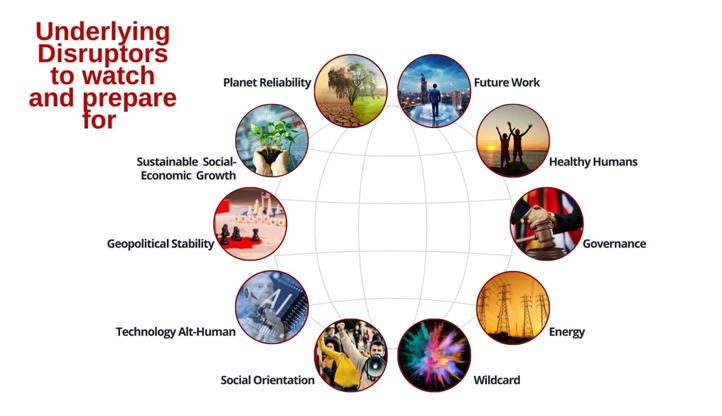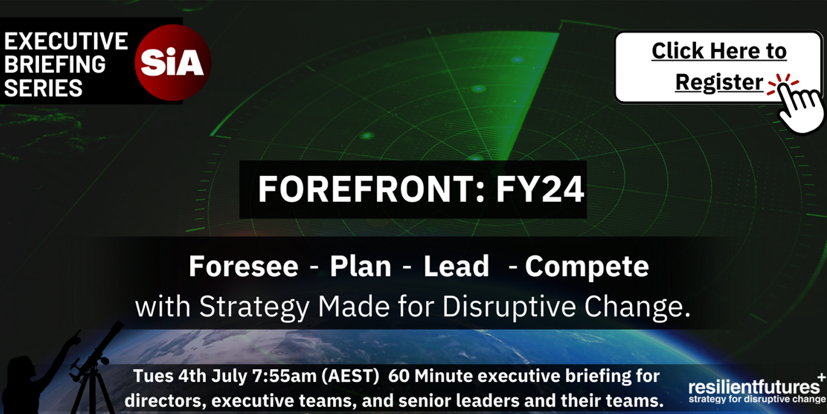Through 20+ years of working in strategy, planning and transformation, we have found that identifying and understanding conditions, immediate and emergent and internal through to global is the foundation for any effective strategy or plan.
Conditions Analysis 101
Conditions are the current and future issues, factors, and drivers of change affecting organisations. Understanding conditions is key to effective decision-making and action. In addition, using a familiar terms like 'conditions' (think weather or health conditions) is a powerful way to secure engagement of your people '- regardless of level or role. When activating a conditions analysis, remember that:
- Conditions are always present
They form the context in which we work, live and play.
- Conditions are neutral
Conditions are neither good nor bad. They are just the conditions. The ‘what is’.
- Conditions occur at scale
From internal to an organisation through to global (micro to mega). In an increasingly connected world things that are happening globally can have a significant local impact. So too can local conditions ripple outward with global consequences.
- Conditions can be immediate or emergent
Immediate conditions are those things that are impacting right now. Emergent conditions are those that will (or may) impact in the future.
- A conditions analysis
Combines desktop research with structured conversations to surface and hold a shared understanding of reality, honouring both evidence and intuition.
Successful conditions analysis via a regular, integrated, and efficient process includes quick check-ins and meetings with a shared language and central data source. This is far more successful than the stop-start approach to analysis of context that is typical of more traditional strategy and planning. Conditions analysis accelerates decision-making and enhances the engagement and empowerment of people - critical to gaining buy-in to action in fast moving, disruptive change.
What conditions should you be watching?

The internal conditions and those that shape your sector or industry are unique to your organisation’s reality. These should be regularly watched, analysed, and reported on as part of a continuous Strategy in Action. And, to truly leverage disruptive change you should be tracking the following 10 must-watch patterns - as major drivers of systemic disruption.
- Planet reliability
While climate change and its impacts are important, how much does your organisation rely on a stable and predictable planet to produce value? As soon as that question is extended into your supply chain, then things like fire, flood, drought, and other planetary extremes must be considered. Is the planet currently reliable for your organisation to generate value?
- Sustainable economic value
With rising cost of living, inflation, increased input costs, and the systemic flow-on of this set of conditions, social-economic pressures are rising. How does your organisation focus on and secure the relevance and value of its products and services?
- Geopolitical stability
War in Europe. Rising tensions in the Asia-Pacific. Shifts in population pyramid and India becoming more globally dominant. Growing internal political fragmentation. All converging with real impacts on supply chains, input costs and the mindset and priorities of government and major industry sectors. What impact is the current instability having on your organisation?
- Technology alternative to human
We all know that the rate of technological innovation and adoption is growing exponentially and that we are moving ever closer to technologies that provide genuine alternatives to human. Is tech making your employees more productive? In most cases the answer now is a definitive ‘yes’! What technologies are providing, immediate alternatives for your organisation? What does the future hold?
- Social orientation
How well do people cope with an increasingly chaotic, transformational reality? What does their ability to cope, or not, mean for your organisation and its ability to be productive? How is polarised politics and the rise of extremes fuelling and being fuelled by the growing disorientation of people?
- Healthy human condition
Changing conditions and accelerating disruptive change is impacting human health. From mental health through to the reality of co-morbidities in the developed world and growing, food and water insecurity in rising nations, we are confronted with the daily reality where health may be our most important challenge. How is this impacting your organisation and your people?
- Governance
The systems, process and people that govern our organisations, local communities, states, and nations are ill-equipped to deal effectively with the complexities of transformational change. Has your organisation’s governance adapted, proactively to change? Is your organisation being impacted by policy and regulation that is not fit for our current and future reality?
- Energy
Particularly in Australia, we are in the chaos of dealing with a lack of a cohesive national energy strategy for the transition of our economy to new and renewable forms of energy. Together with extreme weather patterns Australia has recently witnessed what energy chaos may mean in the future. Does your organisation understand how to find opportunity and mitigate risk in this context?
- Future of work
All of the patterns noted above have a real impact on the future of work and the questions that most organisations are seeking to address. What type of work needs to be done? Who is there to do that work? How do we transition our workforce and workplace into that uncertainty? Not to mention the immediate challenge Australian organisations are facing in terms of talent attraction and retention. Are you exploring the future of work conditions that are material for your organisation?
- Wildcard
In rapid, exponential, transformation change, conditions monitoring, and analysis demands regular scanning for the wildcard. Is your organisation working to discover what “you don’t know you don’t know” and addressing those blind-spots?
A critical aspect of SiA is understanding the systemic relationships, connections and impacts of the conditions you are watching - from internal to global. Consider how the ten patterns interact and the implications of their convergence to shape organisational opportunities and risks.
Join us next month when we discuss Leading 2023: Change is no longer linear. It is going exponential! Are YOU READY to Lead in our new reality?
